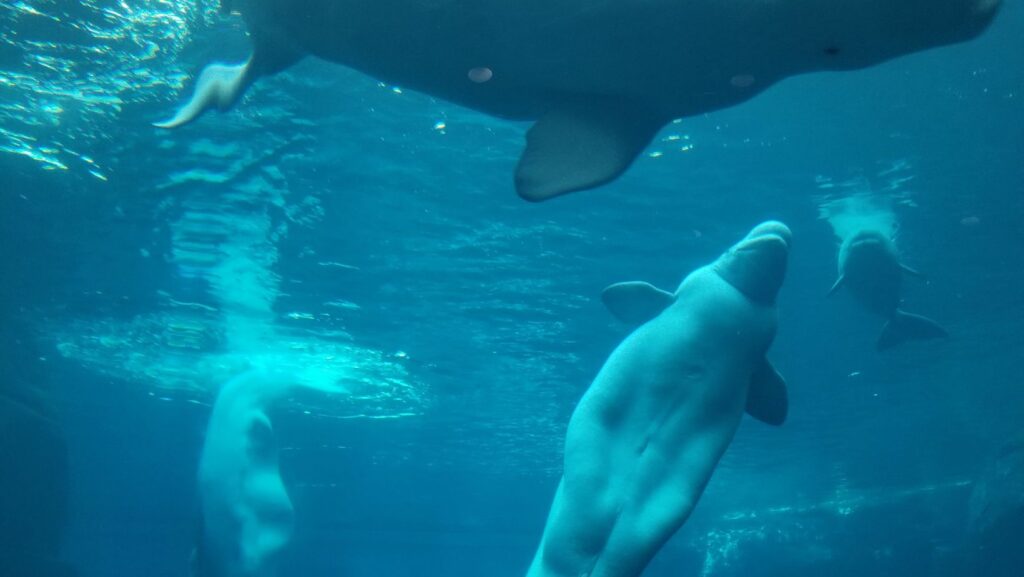Cute:vei_-5bcdym= Beluga

In the vast, icy waters of the Arctic and sub-Arctic regions, the beluga whale, often affectionately dubbed the “canary of the sea,” enchants with its playful nature and melodic vocalizations. These endearing creatures, with their distinct white skin and expressive faces, captivate anyone lucky enough to witness their antics. Their sociable behavior and curiosity make them a favorite among marine enthusiasts and researchers alike.
Belugas are not just charming; they’re also fascinating in their adaptability. Unlike many marine mammals, belugas can move their heads in all directions, thanks to their unfused cervical vertebrae. This unique feature, combined with their playful demeanor, often results in delightful interactions with humans and other sea life. As climate change and human activities increasingly threaten their habitats, understanding and appreciating these adorable cetaceans becomes more crucial than ever.
The Enchanting World Of Cute Belugas
Belugas captivate with their endearing features. Their soft, white skin and gentle expressions often resemble a perpetual smile. These traits, combined with their playful demeanor, make them enchanting to both scientists and casual observers. Belugas often engage in interactive play with humans, showcasing their curiosity and intelligence.

Social behavior among belugas is complex. They live in pods, which can vary in size depending on factors like food availability and season. These pods collaborate in hunting and communication, utilizing a range of clicks, whistles, and chirps. Such behaviors indicate strong social bonds and advanced communication skills.
Belugas thrive in Arctic environments. Their anatomical adaptations, such as a thick layer of blubber, protect against extreme cold. They possess flexible necks, facilitating agile movement when navigating icy waters. These adaptations enable belugas to survive and flourish in challenging habitats.
Belugas face growing environmental threats. Climate change and pollution, including industrial and human activities, threaten their habitat. As Arctic ice melts, the ecological balance shifts, impacting prey availability and increasing predation risks. Conservation efforts are crucial in preserving these adorable cetaceans and their enchanted world.
Characteristics Of Cute Belugas
Distinctive features make cute belugas captivating subjects for marine enthusiasts. Their appearance and playful nature contribute significantly to their appeal.
Physical Appearance
Belugas possess a striking white skin that sets them apart in the marine world. Adults, unlike calves which are gray, develop this hue as they mature over 5 years. Their bulbous forehead, known as a melon, gives them a unique expression and aids in echolocation. Round bodies and short flippers contribute to their ability to thrive in Arctic waters. Flippers serve as steering tools, enhancing their agile movements. The unfused cervical vertebrae allow them to nod and maneuver their heads flexibly.
Playful Behavior
Belugas exhibit playful behaviors, often engaging with each other and their surroundings. Observers note their tendency to perform acrobatics such as breaching and spy-hopping. Natural curiosity often leads them to interact with humans and underwater equipment. They demonstrate social intelligence by using tools, such as carrying objects on their heads or bodies, during play. Vocalizations, including clicks and whistles, are essential for social bonding within pods, showcasing their communicative nature.
Habitat And Distribution

Beluga whales primarily inhabit Arctic and sub-Arctic regions. These areas include the coastal waters of Canada, Alaska, Russia, and Greenland. In summer months, belugas often migrate to estuaries and shallow coastal areas, where they give birth and nurture calves in protected environments. Some populations, like those in the St. Lawrence River and Hudson Bay, reside in the same areas year-round, demonstrating adaptability to varying conditions.
Sea ice plays a crucial role in beluga distribution. It provides vital protection from predators and influences feeding patterns. When ice begins to form in autumn, they move to deeper offshore waters, where food sources such as fish, crustaceans, and worms are abundant.
Environmental factors like temperature shifts and ice coverage changes can impact their habitat range. Human activities, including shipping and oil exploration, further influence these animals’ movement and distribution. Monitoring these factors ensures the protection of beluga populations, which thrive in the delicate Arctic ecosystem.
